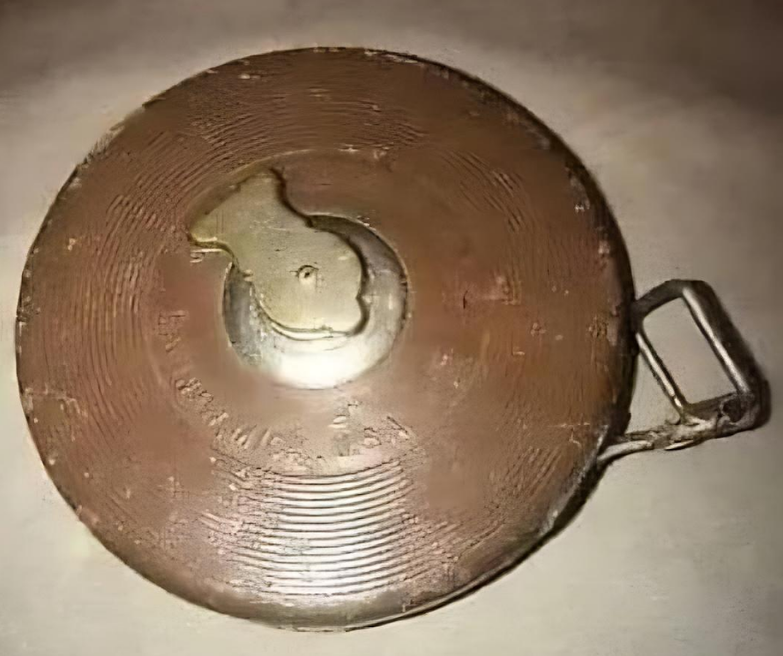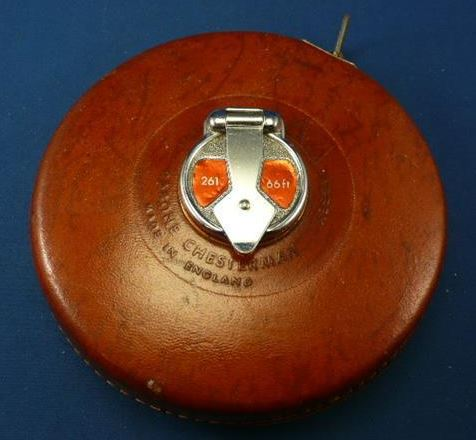The tape measure is a tool so common in modern life that it’s hard to imagine a time without it. Yet, the tape measure’s origin story is both fascinating and filled with unexpected twists. From humble beginnings to becoming an indispensable tool for builders, DIYers, and crafters alike, the tape measure has come a long way. Let’s dive into the intriguing history of the tape measure, exploring its invention, early developments, and how it transformed into the iconic tool we know today.

The Early Beginnings of Measurement Tools
For centuries, people have relied on basic measuring tools to complete essential tasks. Ancient civilizations used everything from strings and rods to sticks with markings to measure distance and dimensions. However, these methods lacked the portability and convenience we now associate with modern measurement tools. As societies evolved, so did the need for more precise and practical measuring devices.
James Chesterman and the Birth of the Tape Measure
The first recorded tape measure came about in 1829, thanks to an inventive mind and an unexpected surplus of materials. British inventor James Chesterman, who originally specialized in metal goods, found himself with an excess of steel wire after the decline of the hoop skirt trend. During the early 1800s, hoop skirts required vast amounts of thin metal strips to create their voluminous shape, but when they fell out of fashion, Chesterman was left with a stockpile of flat wire.
Rather than waste this material, Chesterman devised a way to mark it with measurements, creating a “measuring chain.” This early version of the tape measure was significantly lighter and more flexible than traditional measuring chains or rods, making it more convenient for various applications. Although this first tape measure lacked many of the features we expect today, it served as a foundation for the more advanced designs that would follow.
Alvin J. Fellows and the Spring-Return Tape Measure
Nearly forty years later, the tape measure as we know it began to take shape. In 1868, American inventor Alvin J. Fellows patented an updated version of the tape measure, adding a groundbreaking feature that would forever change its utility. Fellows introduced a spring mechanism that allowed the tape to retract back into its casing with the push of a button. This retraction function made the tape measure far more user-friendly and efficient, as it could be quickly rolled up and stored with ease.
The addition of the spring also meant that the tape could lock into place when extended, allowing for more accurate measurements without constant manual adjustment. Fellows’ design was so innovative that it earned its own patent, separate from Chesterman’s earlier model. This new tape measure design laid the groundwork for the modern version we see today and quickly gained popularity among carpenters, builders, and other tradespeople who needed a reliable, portable measurement tool.

Gaining Popularity in the Construction Industry
It wasn’t until the mid-20th century that the tape measure truly found its place in construction and home improvement. By the 1940s, tape measures had become a staple on building sites across the United States. The tool continued to evolve, incorporating new features to make it even more practical. Among these were durable, compact casings that protected the tape, belt clips for easy access, and the all-important claw or hook on the end of the tape.
This small hook allowed users to latch onto an edge, ensuring measurements could be taken accurately and independently. The hook, combined with the tool’s retractable mechanism, made it possible for one person to measure longer distances without needing a second set of hands. As a result, the tape measure quickly outpaced other measuring tools, like the folding rule, in both popularity and utility.
The Modern Tape Measure: Design Enhancements and Variations
The classic tape measure has undergone numerous design enhancements over the years. Today, you can find tape measures with various features that cater to specific needs:
- Locking Mechanisms: Some modern tape measures come with improved locking mechanisms that securely hold the tape in place. This is especially useful for lengthy measurements where stability is crucial.
- Magnetic Hooks: Magnetic ends allow users to attach the tape to metal surfaces, which is particularly handy for construction and metalworking.
- Durable Casings: Many tape measures now feature shock-resistant, water-resistant casings, making them ideal for tough working conditions.
- Laser and Digital Tape Measures: With technology advancements, some tape measures now include laser pointers for longer measurements and digital displays for easier reading.
Despite these technological advancements, the core concept of the tape measure remains remarkably consistent with the original inventions by Chesterman and Fellows. It is a testament to their designs that even in today’s high-tech world, the fundamental mechanics of the tape measure remain largely unchanged.
The Impact of the Tape Measure on Modern Life
The tape measure is now found in almost every toolbox, home improvement store, and construction site. From DIY projects to major construction endeavors, it has become a symbol of precision, practicality, and reliability. The simplicity of the tape measure’s design, paired with its profound usefulness, has solidified its status as an indispensable tool in various industries.
This simple yet powerful device has proven invaluable not only for professionals but also for the everyday person. Whether hanging pictures, building furniture, or completing home renovations, most people can’t imagine life without their trusty tape measure. It’s a tool that has bridged the gap between industrial and domestic use, finding its way into homes across the globe.

Legacy and the Future of the Tape Measure
The history of the tape measure is a story of innovation and adaptation, beginning with a clever repurposing of surplus material and evolving into a must-have tool in every toolbox. While new designs and materials may continue to refine its functionality, the basic principles laid out by James Chesterman and Alvin J. Fellows will undoubtedly endure.
As technology progresses, we may see tape measures integrated with digital apps, augmented reality, or even smart home systems. However, the classic tape measure, with its tactile simplicity and rugged design, will always hold a special place in both the professional and personal spheres. For many, it’s not just a tool but a timeless symbol of craftsmanship and ingenuity.
Conclusion: A Tool with Timeless Utility
The tape measure’s journey from the remnants of hoop skirts to the cornerstone of toolboxes worldwide speaks to the creativity and innovation of its early inventors. This versatile, simple, and indispensable tool has become more than just a means to measure; it represents a legacy of practical problem-solving that continues to benefit us all. Next time you reach for your tape measure, take a moment to appreciate its storied past and remember that this humble tool is a piece of history still at work today.



